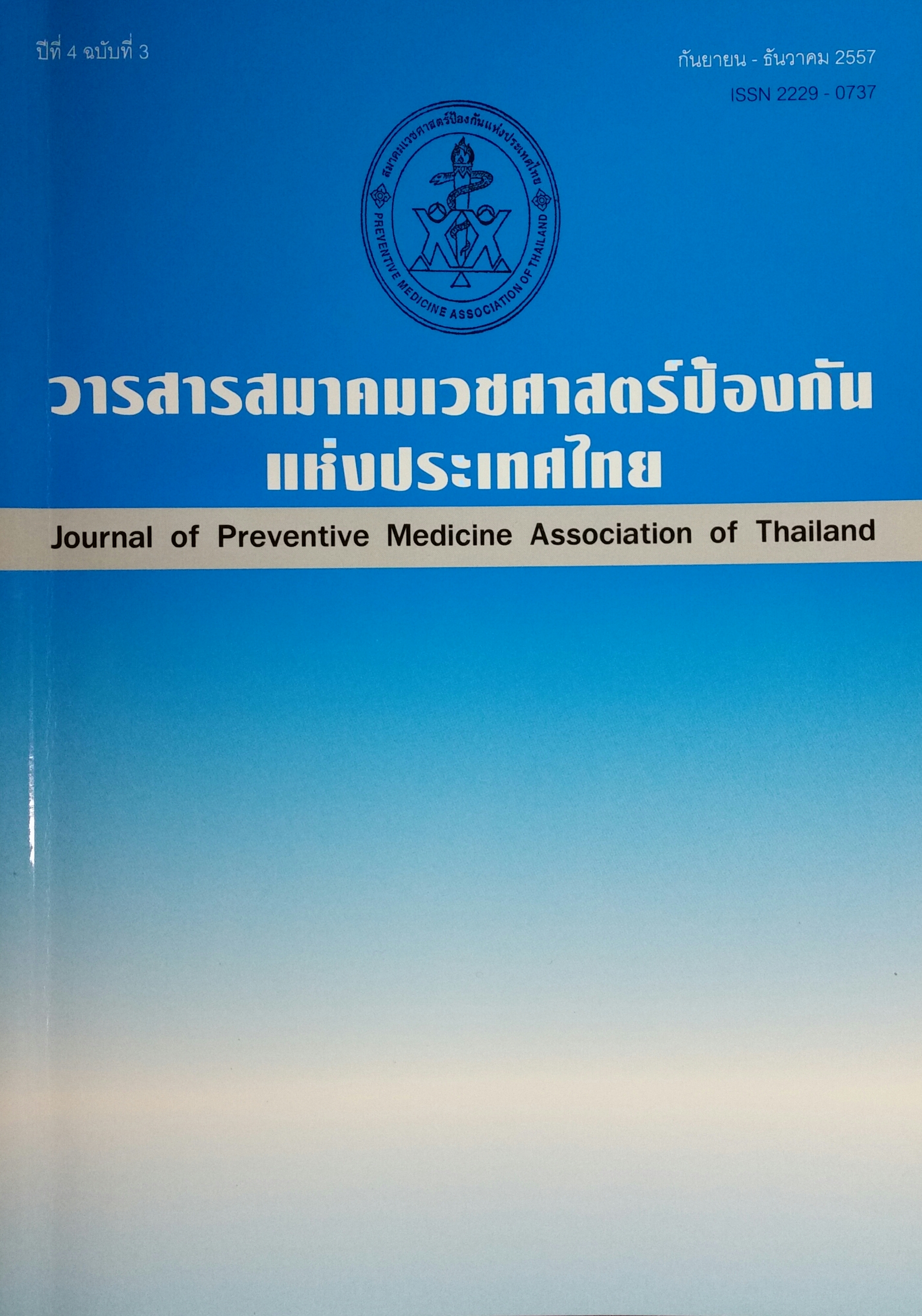การลำเลียงผู้ป่วยโรคติดเชื้ออันตรายโดยทางเครื่องบินข้ามทวีป
Abstract
เราคงจำกันได้ว่า มีบุคลากรทางแพทย์ สหรัฐ 3 ราย ติดเชื้อไวรัสอีโบลาแล้วป่วย ต้องเคลื่อนย้ายกลับไปรักษาที่สหรัฐ มีบาดหลวงสเปนอีก 2 ท่าน ต้องส่งต่อไปรักษาที่กรุงแมริด พยาบาลอาสาสมัครชาวบริทิช 1 คน ต้องส่งตัวจากแอฟริกาตะวันตกไปรับการรักษาที่ประเทศอังกฤษ แพทย์ชาวเยอรมันอีก 1 คนต้องเคลื่อนย้ายส่งต่อกลับไปที่นครฮัมบวร์ก เขาใช้พาหนะประเภทใด ในการเคลื่อนย้าย และมีมาตรการอะไรที่ให้แน่ใจว่า จะไม่มีเชื้อโรคอันตรายแพร่ออกจากผู้ป่วยไปสู่สิ่งแวดล้อมในเครื่องบิน และสถานีปลายทางเรื่องนี้ น่าจะเป็นเรื่องที่น่าสนใจสำหรับผู้ที่ศึกษาเวชศาสตร์การท่องเที่ยว เอาละครับผมจะนำมาเล่าให้ท่านได้ทราบกัน
วันที่ 16 กันยายน 2557 สำนักข่าว Cidrap รายงานว่า มีเครื่องบินอยู่เพียงไม่กี่ลำ ที่มีอุปกรณ์ที่จะลำเลียงเคลื่อนย้ายส่งต่อผู้ป่วยโรคไวรัสอีโบลา สำนักข่าว Cidrap รายงานว่า มีเครื่องบินลำเลียงที่มีขีดความสามารถในการเคลื่อนย้ายผู้ป่วยโรคติดเชื้ออันตรายที่จะมีมาตรการป้องกันการแพร่เชื้อจากผู้ป่วยได้
References
2. CDC. Ebola hemorrhagic fever: transmission. 2014 Aug 13 [Full text]
3. ECDC. Outbreak of Ebola virus disease in West Africa: third update, 1 August 2014. Stockholm: ECDC 2014 Aug 1 [Full text]
4. Martin-Moreno JM, Llinas G, Hernandez JM. Is respiratory protection appropriate in the Ebola response? Lancet 2014 Sep 6;384(9946):856 [Full text]
5. Papineni RS, Rosenthal FS. The size distribution of droplets in the exhaled breath of healthy human subjects. J Aerosol Med 1997;10(2):105-16 [Abstract]
6. Chao CYH, Wan MP, Morawska L, et al. Characterization of expiration air jets and droplet size distributions immediately at the mouth opening. J Aerosol Sci 2009 Feb;40(2):122-33 [Abstract]
7. Nicas M, Nazaroff WW, Hubbard A. Toward understanding the risk of secondary airborne infection: emission of respirable pathogens. J Occup Environ Hyg 2005 Mar;2(3):143-54 [Abstract]
8. Bauchsch DG, Towner JS, Dowell SF, et al. Assessment of the risk of Ebola virus transmission from bodily fluids and fomites. J Infect Dis 2007;196:S142-7 [Full text]
9. Formenty P, Leroy EM, Epelboin A, et al. Detection of Ebola virus in oral fluid specimens during outbreaks of Ebola virus hemorrhagic fever in the Republic of Congo.
Clin Infect Dis 2006 Jun;42(11):1521-6 [Full text]
10. Francesconi P, Yoti Z, Declich S, et al. Ebola hemorrhagic fever transmission and risk factors of contacts, Uganda. Emerg Infect Dis 2003 Nov;9(11):1430-7 [Full text]
11. Dowell SF, Mukunu R, Ksiazek TG, et al. Transmission of Ebola hemorrhagic fever: a study of risk factors in family members, Kikwit, Democratic Republic of Congo, 1995. J Infect Dis 1999 Feb;179:S87-91 [Full text]
12. Roels TH, Bloom AS, Buffington J, et al. Ebola hemorrhagic fever, Kikwit, Democratic Republic of the Congo, 1995: risk factors for patients without a reported exposure. J Infect Dis 1999 Feb;179:S92-7 [Full text]
13. Kuhl A, Hoffmann M, Muller MA, et al. Comparative analysis of Ebola virus glycoprotein interactions with human and bat cells. J Infect Dis 2011 Nov;204:S840-9 [Full text]
14. Hunt CL, Lennemann NJ, Maury W. Filovirus entry: a novelty in the viral fusion world. Viruses 2012 Feb;4(2):258-75 [Full text]
15. Bray M, Geisbert TW. Ebola virus: the role of macrophages and dendritic cells in the pathogenesis of Ebola hemorrhagic fever. Int J Biochem Cell Biol 2005 Aug;37(8):1560-6 [Full text]
16. Mohamadzadeh M, Chen L, Schmaljohn AL. How Ebola and Marburg viruses battle the immune system. Nat Rev Immunol 2007 Jul;7(7):556-67 [Abstract]
17. Lindsley WG, Blachere FM, Thewlis RE, et al. Measurements of airborne influenza virus in aerosol particles from human coughs. PLoS One 2010 Nov 30;5(11):e15100 [Full text]
18. Caul EO. Small round structured viruses: airborne transmission and hospital control. Lancet 1994 May 21;343(8908):1240-2 [Full text]
19. Chadwick PR, Walker M, Rees AE. Airborne transmission of a small round structured virus. Lancet 1994 Jan 15;343(8890):171 [Full text]
20. Best EL, Snadoe JA, Wilcox MH. Potential for aerosolization of Clostridium difficile after flushing toilets: the role of toilet lids in reducing environmental contamination. J Hosp Infect 2012 Jan;80(1):1-5 [Full text]
21. Gerba CP, Wallis C, Melnick JL. Microbiological hazards of household toilets: droplet production and the fate of residual organisms. Appl Microbiol 1975 Aug;30(2):229-37 [Full text]
22. Barker J, Jones MV. The potential spread of infection caused by aerosol contamination of surfaces after flushing a domestic toilet. J Appl Microbiol 2005;99(2):339-47 [Full text]
23. Piercy TJ, Smither SJ, Steward JA, et al. The survival of filoviruses in liquids, on solid substrates and in a dynamic aerosol. J Appl Microbiol 2010 Nov;109(5):1531-9 [Full text]
24. Jaax N, Jahrling P, Geisbert T, et al. Transmission of Ebola virus (Zaire strain) to uninfected control monkeys in a biocontainment laboratory. Lancet 1995 Dec 23-30;346 (8991-2):1669-71 [Abstract]
25. Kobinger GP, Leung A, Neufeld J, et al. Replication, pathogenicity, shedding and transmission of Zaire ebolavirus in pigs. J Infect Dis 2011 Jul 15;204(2):200-8 [Full text]
26. Weingartl HM, Embury-Hyatt C, Nfon C, et al. Transmission of Ebola virus from pigs to non-human primates. Sci Rep 2012;2:811 [Full text]
27. Reed DS, Lackemeyer MG, Garza NL, et al. Aerosol exposure to Zaire Ebolavirus in three nonhuman primate species: differences in disease course and clinical pathology. Microb Infect 2011 Oct;13(11):930-6 [Abstract]
28. Roy CJ, Milton DK. Airborne transmission of communicable infection—the elusive pathway. N Engl J Med 2004 Apr;350(17):1710-2 [Preview]
29. Canadian Standards Association. Selection, use and care of respirators. CAN/CSA Z94. 4-11
30. Wolz A. Face to face with Ebola—an emergency care center in Sierra Leone. (Perspective) N Engl J Med 2014 Aug 27 [Full text]
Downloads
Published
How to Cite
Issue
Section
License
บทความที่ลงพิมพ์ในวารสารเวชศาสตร์ป้องกันแห่งประเทศไทย ถือเป็นผลงานวิชาการ งานวิจัย วิเคราะห์ วิจารณ์ เป็นความเห็นส่วนตัวของผู้นิพนธ์ กองบรรณาธิการไม่จำเป็นต้องเห็นด้วยเสมอไปและผู้นิพนธ์จะต้องรับผิดชอบต่อบทความของตนเอง






